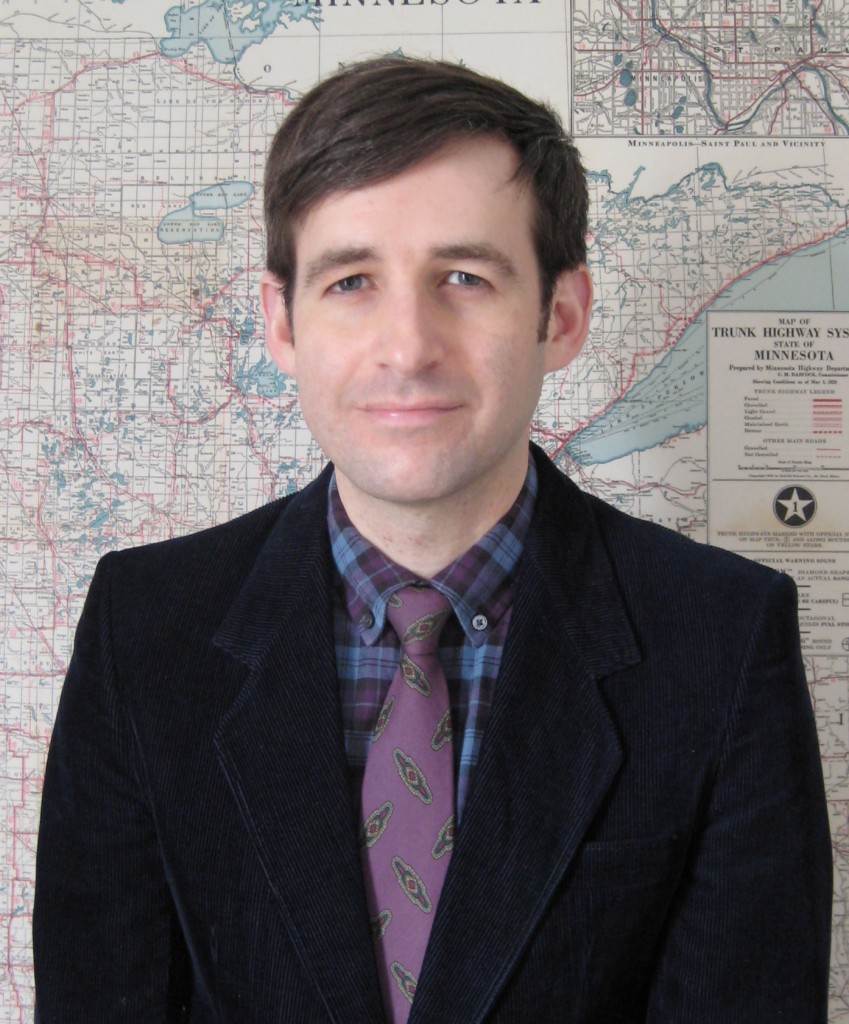Written by guest blogger, Joseph Malherek.
 Joseph Malherek, author of “From the Ringstraße to Madison Avenue: Commercial Market Research and the Viennese Origins of the Mass-Culture Debate, 1941–6” which appears in Vol. 47, Issue 2 of the Canadian Review of American Studies.
Joseph Malherek, author of “From the Ringstraße to Madison Avenue: Commercial Market Research and the Viennese Origins of the Mass-Culture Debate, 1941–6” which appears in Vol. 47, Issue 2 of the Canadian Review of American Studies.Known for monumental works in midcentury sociology such as White Collar, The Power Elite, and The Sociological Imagination, C. Wright Mills earned a reputation as an incisive, independent social critic who exposed the biases and banalities of both elite power brokers and ordinary Americans. Yet one of Mills’s assignments early in his career had him conducting a survey in Decatur, Illinois funded by major magazine publisher, Macfadden, which was known for its sensational pulp titles like True Story. Mills had just begun working under Paul Lazarsfeld and Robert Merton at the Bureau of Applied Social Research at Columbia University, where he would eventually join the sociology faculty. Although he worried about how colleagues would perceive his “selling out,” he quickly became engaged in the work when he began part-time in 1944 and then full-time in 1945.
Lazarsfeld and his Bureau colleagues had conducted a study on the 1940 presidential election, published in 1944 as The People’s Choice, which had sought to elaborate the many factors which influenced voters’ decision-making processes. The study, which used the “panel” technique of repeated interviews with the same individuals, focused on the role of “opinion leaders,” who existed horizontally in each social group and served as mediators between the mass media and voters. As opposed to a “hypodermic” model of media influence, which presumed the direct influence of the media, this “two-step” model took seriously the role of people in communicating information.
Mills’s job in Decatur was to apply the insights of the People’s Choice study and employ a method called “snowball sampling” to trace the chains of influence by interviewing opinion leaders and their followers. The magazine publisher was interested in identifying “influentials” who might serve as conduits for the messages of their advertisers. The maverick Mills, however, was lax in following Lazarsfeld’s prescribed quantitative methodology, which would eventually lead to his dismissal from Lazarsfeld’s Bureau. But the two continued their work incongruously in the Columbia sociology department, where their simmering interpersonal conflict was later fictionalized in the novel False Coin by Mills’s friend Harvey Swados.
The maverick Mills, however, was lax in following Lazarsfeld’s prescribed quantitative methodology, which would eventually lead to his dismissal from Lazarsfeld’s Bureau
Mills would end up using his interviews from the Decatur study as the basis for his broad analysis of bureaucracy and social organization in the American middle classes, published in 1951 as White Collar. Despite the book’s later canonization, when it appeared Lazarsfeld viewed it skeptically as a bastardization of the work of his Bureau. The sociologist David Riesman, an admirer of Lazarsfeld, agreed that for Mills methodological rigor was secondary to the effectiveness of his polemic. Yet Lazarsfeld had to acknowledge Mills’s role in popularizing an idea of social stratification among historians, and Lazarsfeld was able to salvage much of the Decatur research for his own book, Personal Influence, published in 1955 with Elihu Katz.
Mills would later skewer Lazarsfeld’s brand of “abstracted empiricism” as a “molecular” kind of applied research which could not address big questions, but he remained indebted to Lazarsfeld’s Bureau and the magazine publisher Macfadden, which had sponsored his most enduring sociological study.
Malherek’s article, “From the Ringstraße to Madison Avenue: Commercial Market Research and the Viennese Origins of the Mass-Culture Debate, 1941–61“, appears in Volume 47, Issue 2 of the Canadian Review of American Studies, available to read here.
Comments on this entry are closed.